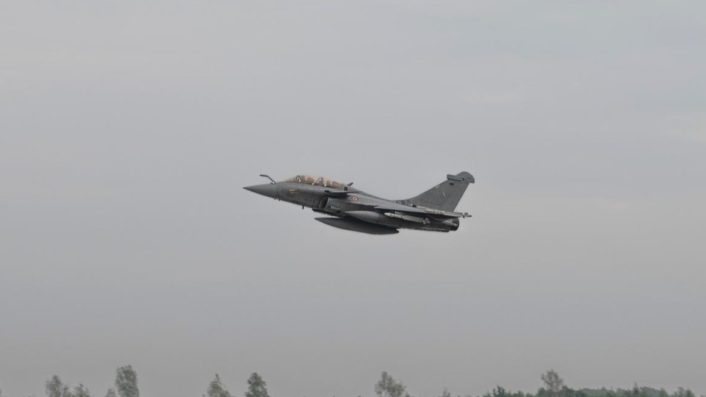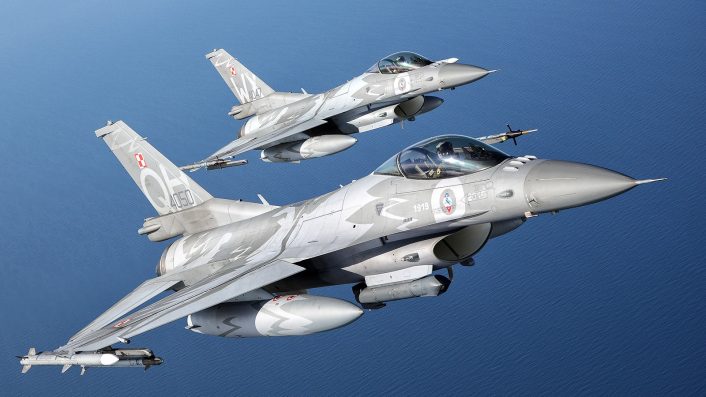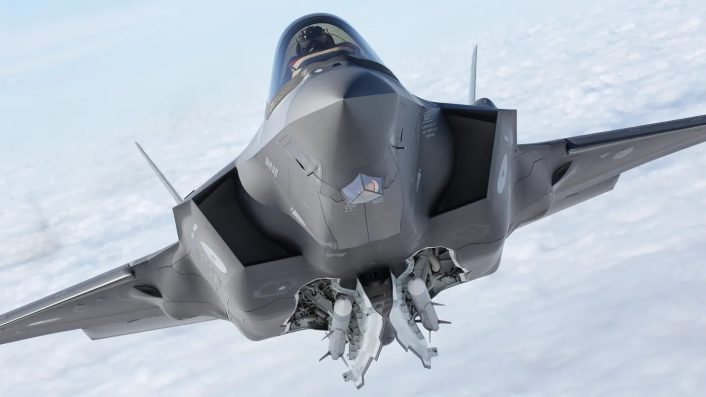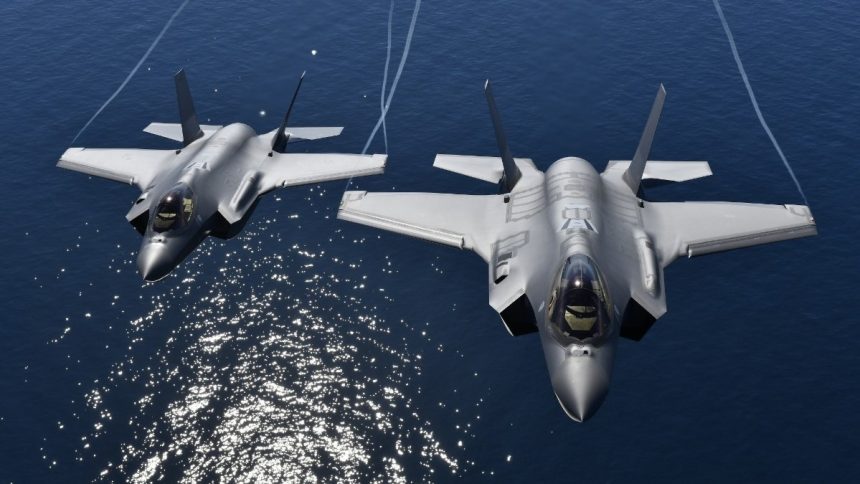Operation Eastern Sentry boosts NATO’s eastern defenses after Russian drones violated Polish airspace, raising tensions along the Alliance’s flank.
Following the unprecedented violation of Polish airspace by Russian drones earlier this week, NATO has now launched Operation Eastern Sentry, a new mission designed to bolster defenses along its eastern flank. The operation, which was announced on Sep. 12, 2025, comes as a direct response to what the Alliance has described as “reckless and unacceptable” behavior by Moscow, and is intended to reassure member states of NATO’s readiness to defend its territory.
The announcement follows the events of Sep. 10, when numerous Russian drones crossed into Poland, triggering what officials have called the first engagement of its kind in NATO’s history. Polish F-16s and Dutch F-35 were scrambled to the scene and opening fire.
According to Defense News, quoting official sources, three drones were shot down by NATO aircraft, while at least eight others crashed inside Poland. Fortunately, there were no casualties, although debris was recovered in several locations.
Poland’s Operational Command described the intrusions as “repeated violations” of its airspace, while Polish President Andrzej Duda later characterized them as a deliberate attempt to test NATO’s defenses. On Sep. 13, Polish and NATO forces were again on high alert as Russian drones were reported in western Ukraine, and one was intercepted in northern Romania.
Today, the Romanian Air Force intercepted a Russian drone violating our national airspace.
Two F-16s from the 86th Air Base scrambled and tracked it until it disappeared near Chilia Veche. The population was never in danger.
Romania condemns Russia’s reckless behavior, which…
— Ionut Mosteanu (@IonutMosteanu) September 13, 2025
NATO’s Response and Article 4 Consultations
In the immediate aftermath of the incident, Poland invoked NATO’s Article 4, which allows member states to call consultations when they feel their territorial integrity, independence, or security is under threat. This marked the eighth time Article 4 has been triggered since NATO’s founding in 1949, with the most recent being at the beginning of the Russian invasion of Ukraine in 2022.
The North Atlantic Council convened on Sep.10, with member states expressing solidarity with Poland and condemning Russia’s actions. NATO Secretary General Mark Rutte said the incident “was not an isolated one” and warned that airspace violations of this nature are “absolutely reckless and dangerous.”
⚡ Réactivité.
✈️ Puissance.
🤝 Solidarité.
Trois #Rafale déployés en Pologne avec le soutien de nos A400M Atlas, pour défendre l’espace aérien du flanc Est de l’Europe #EasternSentry.
L’@Armee_de_lair et de l’Espace : toujours au rendez-vous. pic.twitter.com/9vtohycQgO
— Chef d’état-major armée de l’Air et de l’Espace (@CEM_AAE) September 13, 2025
Speaking at a press conference, Rutte emphasized that NATO’s air defenses performed as intended during the drone incident, with coordinated action involving Polish F-16s, Dutch F-35s, Italian CAEW aircraft, NATO MRTT tankers, and German Patriot batteries. “Our air defenses were activated and successfully ensured the defense of NATO territory,” Rutte noted, praising the professionalism of the pilots and crews involved.
Eastern Sentry: A Multi-Domain Mission
Against this backdrop, NATO has now stood up a new mission, called Operation Eastern Sentry. The Alliance describes the mission as a multi-domain activity that will initially concentrate on Poland’s defense but is intended to expand across NATO’s eastern flank, from the Baltic to the Black Sea.
📍Poland | First 🇫🇷 flights within operation EASTERN SENTRY ✈️
🛡️ Steadfast vigilance alongside our allies pic.twitter.com/chaGquQNx2
— The 🇫🇷 Joint Staff – Military operations (@FrenchForces) September 13, 2025
Supreme Allied Commander Europe (SACEUR) General Alexus G. Grynkewich stated that Eastern Sentry will be “flexible and agile, delivering even more focused deterrence and defense exactly when and where needed.” He underlined that the mission is intended to provide both immediate reinforcement and long-term resilience.
“The violation of Poland’s airspace earlier this week is not an isolated incident and impacts more than just Poland,” Grynkewich said. “While a full assessment of the incident is ongoing, NATO is not waiting, we are acting.
According to NATO, the initial contributions include two Danish F-16s and an anti-air warfare frigate, three French Rafales, and four German Eurofighters. Italy and the Netherlands already have F-35As forward-deployed in Estonia and Poland, respectively.
The United Kingdom has expressed its willingness to join, with reports suggesting that up to six Typhoon fighters could be dispatched. Spain has also pledged to provide air assets, according to Reuters, though specifics currently remain undisclosed.

Strengthening Air Defenses and Counter-Drone Capabilities
Eastern Sentry will not only integrate additional airpower but also strengthen NATO’s layered air and missile defenses. The operation will see closer cooperation between Allied Command Operations and Allied Command Transformation, with the latter charged with experimenting and fielding new technologies.
NATO has highlighted counter-drone systems as a particular focus, aiming to address the challenges posed by the large-scale use of unmanned aerial vehicles in modern conflicts. In fact, reports mention that Poland is already moving to fill in the gaps of its counter UAS defenses.
The incident in Poland further underscored this vulnerability. NATO officials confirmed that at least 19 Russian drones entered Polish airspace on Sep. 10, with one drone reportedly penetrating as far as 160 miles into the country, forcing the temporary closure of four airports.
The drones recovered in Poland have been identified as Russian-designed Gerberas, described as simplified and cheaper complements to the Iranian-origin Shahed-136, widely used by Russia in Ukraine. This type of drones is mainly used by Russia as decoy to distract or locate Ukrainian air defenses, with secondary recon and strike roles.

Since the beginning of Russia’s full-scale invasion of Ukraine in 2022, drones and missiles have already occasionally strayed into NATO territory, including Romania, Estonia, Latvia, and Lithuania. However, NATO officials and analysts agree that the scale of the latest incident represents a significant escalation.
Political and Strategic Repercussions
The recent incident has also stirred political debate within the Alliance. While U.S. President Donald Trump suggested the drone incursions may have been accidental, Polish leaders rejected this interpretation outright. Warsaw insisted the flights were intentional probes of NATO’s air defenses, a rare public disagreement with Washington on security assessments.
For European leaders, the episode reinforced concerns about NATO’s preparedness to counter sustained mass drone attacks, which has been a hallmark of Russia’s campaign in Ukraine. According to Defense News, Russia recently launched its largest aerial assault since 2022, involving over 800 drones and decoys, further underlining the scale of the challenge.
At the United Nations, the U.S. joined allies in condemning the incursions as violations of international law and the U.N. Charter. Russia, for its part, denied targeting Poland, with its U.N. ambassador insisting that the drones used had insufficient range to reach Polish territory.

NATO, however, has been unequivocal in its assessment that Russian drones entered allied airspace and were engaged accordingly.
Escalating Tensions on NATO’s Eastern Flank
Eastern Sentry also coincides with the start of Zapad 25, a large-scale Russian-Belarusian military exercise taking place in Belarus, western Russia, and the Baltic and Barents Seas. Such drills, conducted periodically, are widely viewed as shows of force aimed at NATO.
Poland has responded by mobilizing 40,000 troops along its eastern borders and restricting crossings with Belarus. In fact, both road and railway border crossings have been blocked by Polish authorities.
While NATO leaders have refrained from characterizing the Polish drone incident as a deliberate prelude to escalation, they have made clear that the Alliance will act decisively to prevent further violations. “Eastern Sentry and this new approach will deliver even more focused and flexible deterrence and defense where and when needed to protect our people and deter against further reckless and dangerous acts,” Grynkewich emphasized.
Rutte echoed this sentiment, stressing that NATO “will defend every inch of Allied territory.” He also urged members to increase defense spending and production capacities in line with commitments made at the Alliance’s summit in The Hague earlier this year.









